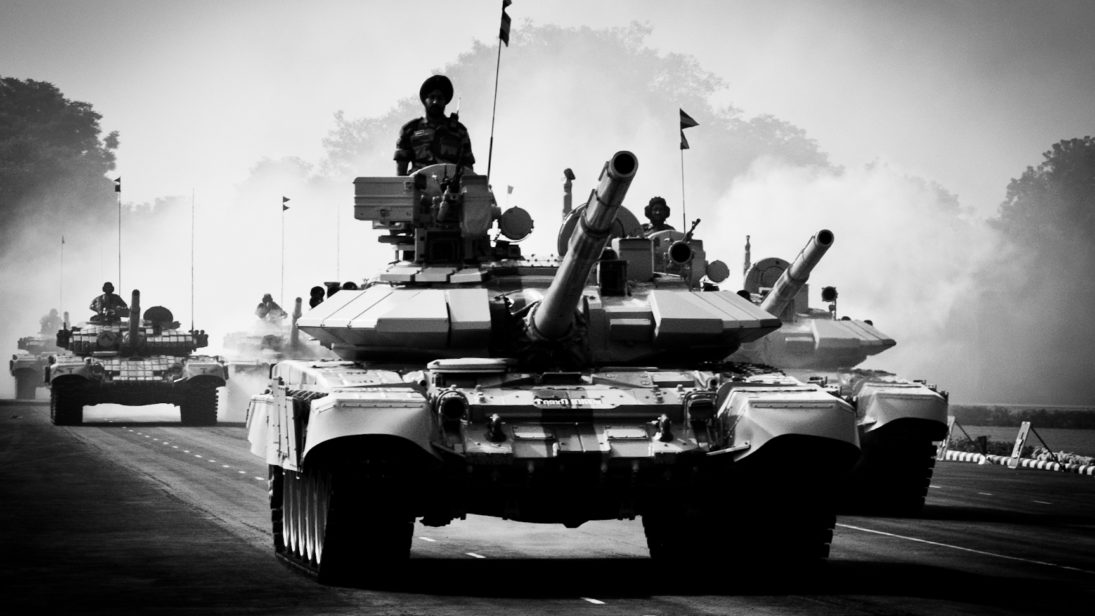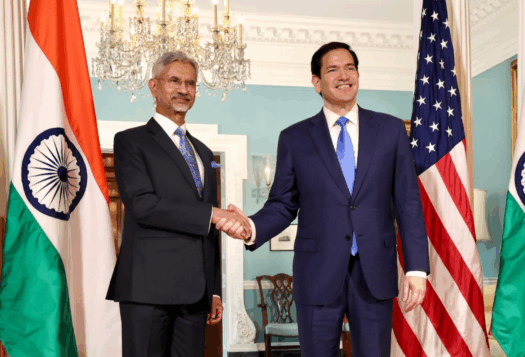
The recent release of the Joint Doctrine of the Indian Armed Forces report is a welcome step. For a while now, there have been calls for white papers on Indian defense strategy because of its ambiguity on a number of issues. However, while the idea of creating a document to provide further clarity to Indian defense strategy is a positive development, the question is whether the joint doctrine accomplishes what it set out to achieve. In particular, do we now know things about Indian defense policy that we did not know before?
It was expected that the joint doctrine would shed light on four primary issues: joint operations among the three services, higher defense organization, surgical strikes and the Cold Start doctrine, and the nuclear doctrine. In reality, however, while touching upon all of these topics, the doctrine provides little more insight than is already known. The doctrine also neglects the outlook of the Indian defense establishment toward India’s two primary rivals: China and Pakistan.
Joint Operations Among Services
Chapter five of the joint doctrine deals with the issue of integrated and joint structures of operations among the three services of the Indian Armed Forces. It begins with a particularly nebulous definition of “jointness,” which is defined as “an optimized capability to engage in Joint War-Fighting and is not limited to just Joint-War Fighting (Joint Operations).” The doctrine goes on to highlight that jointness requires a high level of cross-domain synergy and high level of investment in terms of time and resources from all rungs of the military. The document, however, does not comment on the desirability of such an approach in the Indian Armed Forces.
In fact, to the contrary, the doctrine goes on to highlight that the integrated and joint operations structures present currently will continue to be in place. The Chiefs of Staff Committee (COSC) will draw up joint operational directives but the services will independently continue their single service planning process in conjunction with the integrated plans of the COSC. There is mention of a Joint Operations Committee in the doctrine, but it is essentially embedded within the COSC with no clear distinction between the two.
In sum, this “joint” doctrine does not promote or necessitate any “jointness” in military operations. The “integration” of planning is only at the very high level of the COSC, which has been the case for decades now. There is, thus, nothing new in this recent formulation, which is a disappointment. Through this doctrine, the three services have essentially maintained their operational autonomy and protected their turfs.
Surgical Strikes and Cold Start
The joint doctrine mentions the term “surgical strikes” only once. It states that “the response to terror provocations could be in the form of ‘surgical strikes’ and these would be subsumed in the sub-conventional portion of the spectrum of armed conflict.” The doctrine neither defines “surgical strikes” nor the circumstances in which these would be conducted. No red lines have been specified. One could claim this helps retain strategic ambiguity in the use of force of the Indian military. However, this half-hearted mention of “surgical strikes” in the joint doctrine simply indicates that there has been no clear doctrinal incorporation of this military option within broader Indian military strategy. This suggests the use of this tactic in the future will remain ad hoc. In other words, we should continue to expect inconsistent responses to acts of aggression committed by Pakistani forces or extremist groups.
In January this year, the Indian Army Chief Bipin Rawat stated that the “Cold Start doctrine exists for conventional military operations.” Considering the controversy this statement generated and the ambiguity over the existence of the doctrine over the years, it is surprising that the joint doctrine makes no explicit mention of Cold Start. The closest hint is the statement that “India has moved to a pro-active and pragmatic philosophy to counter various conflict situations.” That is not a very substantive signal. If the Cold Start doctrine is indeed an existing service doctrine, why has it been neglected in the Joint Doctrine?
Nuclear Doctrine
In a recent debate on the Indian nuclear doctrine, it was suggested that India may be moving to a counterforce doctrine. This argument was based on statements of important members of the Indian nuclear decision-making establishment. The Joint Doctrine, however, does not address this debate. It does, however, reinforce the point that Indian nuclear command and control will firmly remain in the hands of the civilian leadership.
The main point of contention in this joint doctrine is the statement that a “defining issue“ for India’s nuclear command is to “maintain a credible deterrence [emphasis added].” If this is not an oversight from the authors of the doctrine, this marks a shift from the 2003 nuclear doctrine, which is committed to “building and maintaining a credible minimum deterrent [emphasis added].” A conscious removal of the “minimum” in the new doctrine could signal that India may not remain committed to the low numbers of nuclear weapons. As a consequence, future Indian strategic forces modernization could be more aggressive than previous years with a qualitative and quantitative expansion of India’s nuclear forces.
Another observation in the discussion on nuclear doctrine and forces is that this joint doctrine marks the first pronouncement by the Indian nuclear command that a “dispersed arsenal structure” will be maintained by India. While the implication of this statement is that building a robust nuclear triad will be top on the agenda of the Indian Armed Forces, the doctrine, curiously, does not actually mention the nuclear triad at all.
Final Impressions and Way Forward
Overall, the Joint Doctrine of the Indian Armed Forces report does not actually tell us much more than we already know. It provides little additional insights about how India’s ability to defend against China and/or Pakistan has changed in recent years. This is a wasted opportunity because documents like the Joint Doctrine could be useful devices to signal deterrent capabilities against adversaries. For example, a well-stated Cold Start doctrine, or more specified red lines, which once crossed would lead to “surgical strikes,” could signal resolve to Pakistan. Furthermore, future Indian military doctrines entitled “joint doctrine” must formulate substantive ways in which the three services can cooperate operationally, instead of simply continuing to focus on their own interests under the auspices of the COSC. Although the release of this doctrine is a positive signal that the Indian Armed forces realize that a more comprehensive accounting of Indian defense strategy is needed, the report falls well short of this goal.
Editor’s note: This is the first piece in a two-part series reviewing the recently released Indian Armed Forces Joint doctrine. Read the second piece here.
***


